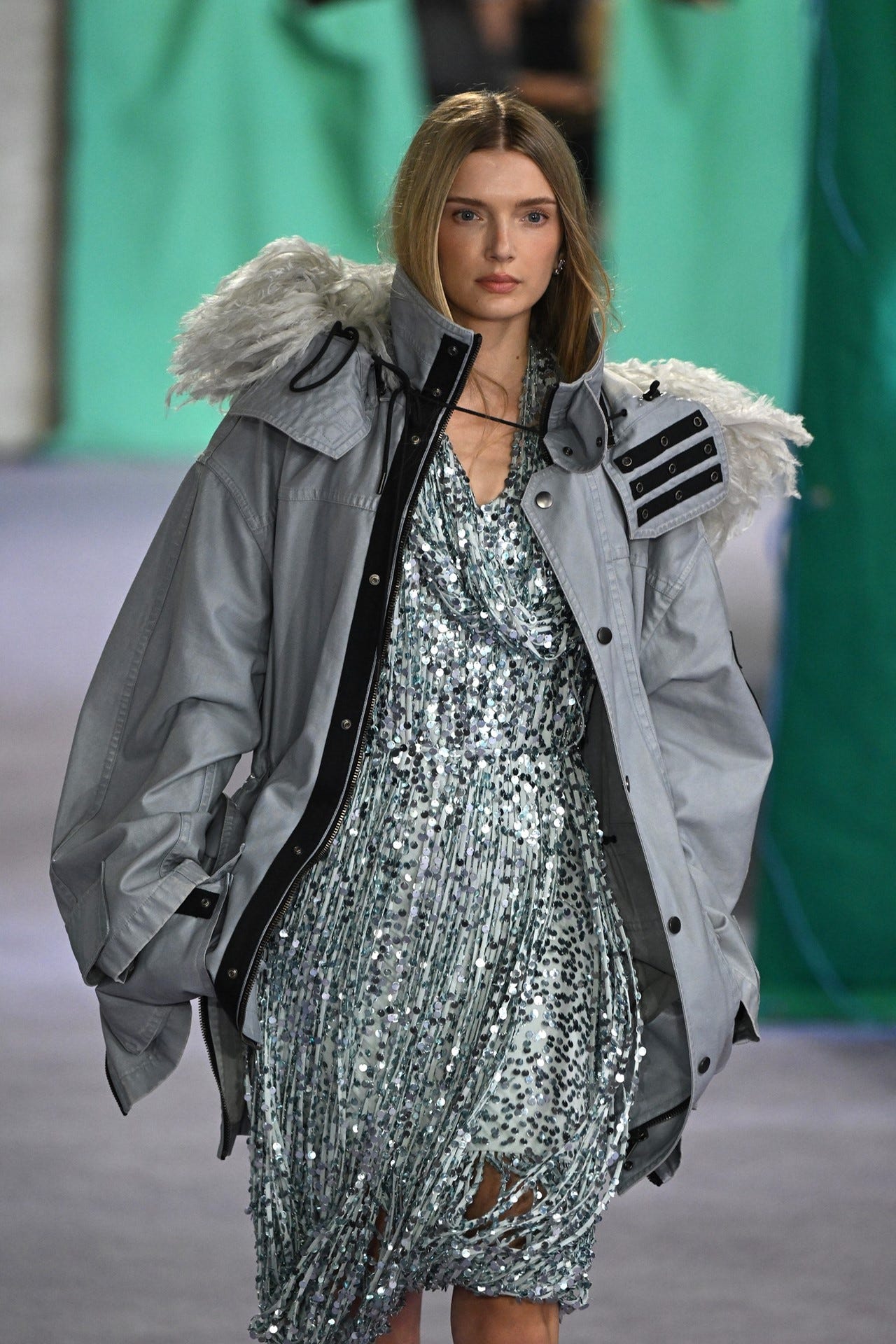Burberry Spring/Summer 25: A Bold Recalibration of Heritage and Modernity
Burberry's London Fashion Week has Daniel Lee Reinventing Heritage with Precision
Burberry's Spring/Summer 2025 collection made a dramatic statement during London Fashion Week, affirming the brand's legacy as the pioneer of British luxury fashion. With a lavish backdrop, the show blended heritage and innovation, interpreting the modern metamorphosis of Burberry under the creative guidance of Daniel Lee. The collection presented a new take on classic tailoring, outerwear, and contemporary styling, yet remained true to the sophisticated, timeless essence of the brand.
Since the appointment of Daniel Lee as creative director in 2022, Burberry’s image has undergone a profound transformation. Lee’s approach can be understood as a response to contemporary ‘quiet luxury’ trends through his combination of heritage with the lightness of modern summer wear. Indeed, the 2025 collection’s fusion of high-end craftsmanship and modernity was described by Lee as ‘grounded in joy and a warm sense of familiarity’ and with new textures, innovative silhouettes, and an evolved colour palette, it presented an ambitious reinterpretation of Burberry’s heritage style. This season’s collection has more than lived up to Burberry's decorated past of British style and utility and has created a new generation for the company, leaving an indelible mark on the business.
Burberry Spring/Summer 2025 is a joyous ode to modern British identity, bringing together elements of heritage, utility, and urbanity. With roots in timeless British tailoring, urban street style, and nature, the collection expresses tension between tradition and progression. Daniel Lee has utilised an advanced but investigative approach, reimaging Burberry's historical trench coats, checked patterns, and formal silhouettes in a fresh, new way.
This collection honours a feeling of ease and languid luxury and is ideal for the warmer weather. Lightweight fabrics and loose-cut silhouettes are offset by more formal, architectural designs, showcasing the dichotomy of British fashion—sophistication and practicality. The collection appears to be inspired by London's urban landscape, with its subdued but intense colour palette, subtle nods to British subcultures, and emphasis on easy, wearable clothing.
By merging traditional craftsmanship with forward-thinking design, the collection restyles Burberry's visual vocabulary for the contemporary era. Deconstructed tailoring, rethought outerwear, or bold texture – the collection upends perceptions while being grounded in the brand's iconic heritage.
The Burberry Spring/Summer 2025 collection colour palette balances time-honoured neutrals and striking, eye-catching colours. Though the brand's tried and trusted classic beige, camel, and navy stay, Daniel Lee introduces softer pastel shades, forest greens, and brooding, sulky blues to bring a new dimension to the style of the brand. Untimely bursts of colour in rich burgundy or muted yellow bring a vivacity to the range, forging a dialogue between tact and drama. This advanced colour palette captures the essence of season change, blending a mix of practical everyday colours and luxury shades suitable for spring and summer dressing.
In terms of fabrics, the collection boasts a strong emphasis on light, airy fabrics suitable for warm weather. Luxury cotton, linen, and silk are the foundation of the collection, offset by technical fabrics and soft leathers. Burberry's history of outerwear excellence is visible in the remade trench coats, which have been infused with water-resistant finishes, deconstructed hardware, and flowing draping. There is also focus on textural complexity, with ensembles featuring slight embroidery, layering transparencies, and intricate manipulations of the fabric, enhancing the richness and elegance of the collection.
Burberry Spring/Summer 2025 revealed a razor-sharp roster of actors, musicians, and players from the fashion business, placing Daniel Lee's work squarely in the spotlight. This year’s cast did not send shockwaves across the industry as it did last year, when Lee brought noughties legend Agyness Deyn back to the limelight, however there were still a number of notable faces. This included: Lily Donaldson, Edie Campbell and Chinese supermodel, Liu Wen, whose walk closed the show. Donaldson’s appearance on the runway exemplified Burberry’s approach, with a silver sequin-adorned dress combining with an industrial-inspired grey jacket bringing to life Lee’s vision of a marriage between heritage and modernity. This pairing of softness against strength worked for a number of reasons. Firstly, the brutalist backdrop complemented the weightiness of Donaldson’s jacket and additionally, Lee has consistently sought to portray an image ‘reminiscent of grabbing your coat over your party dress on a brisk night out’, which has been an increasingly common feature of feminine partywear.
Rosie Huntington-Whiteley, Gabrielle Union, Jodie Turner-Smith, and Barry Keoghan sat front row, all in Burberry, their presence generating press and social media buzz for the brand. Cameras captured every detail—what they wore, how they reacted, whom they spoke to
First reactions were rapid. Critics analysed the details, playing tradition off against reinvention. ELLE highlighted the ingenious revamps on Burberry trench coats and check motifs, applauding Lee's hand at restarting without removing. Some saw risk; others saw mastery. Burberry's show was placed differently to other London Fashion Week designers. It did not trend. It redefined the rules, showing that tradition and modernity don't have to fight for space—there's room for both, just like there's room in the front row.


